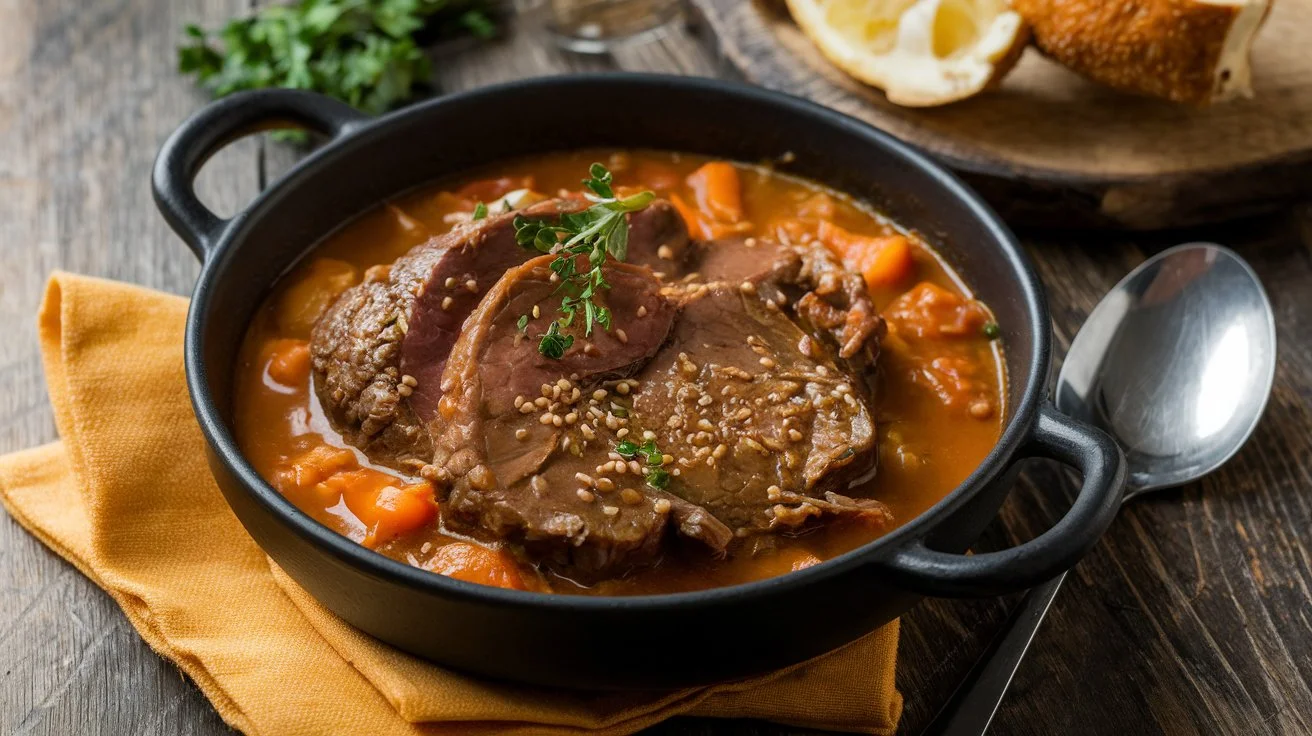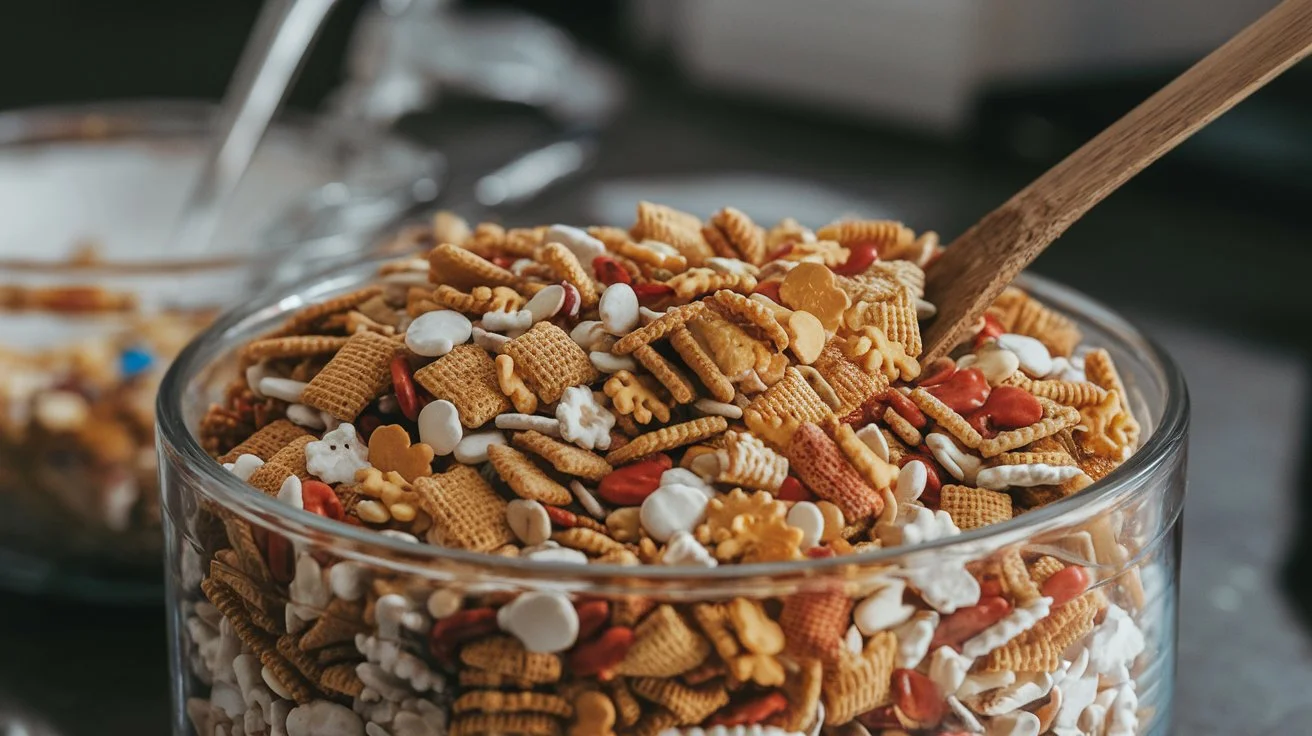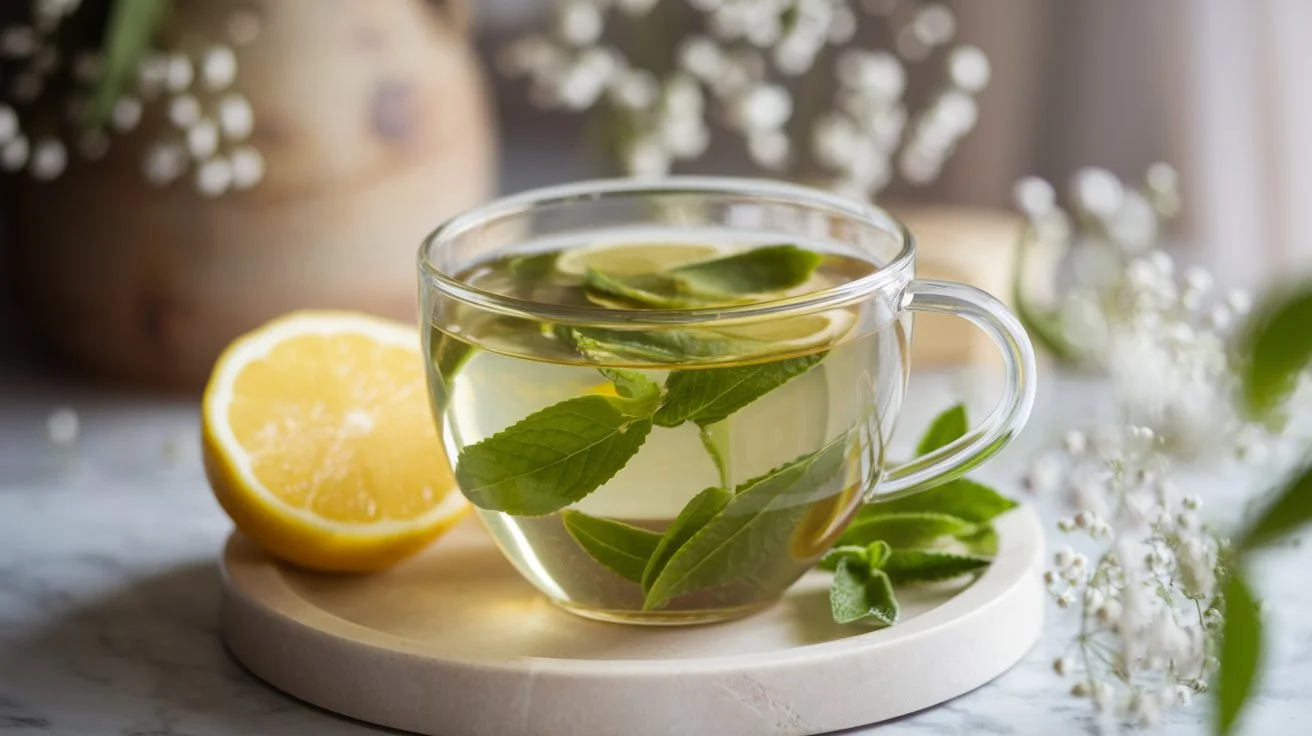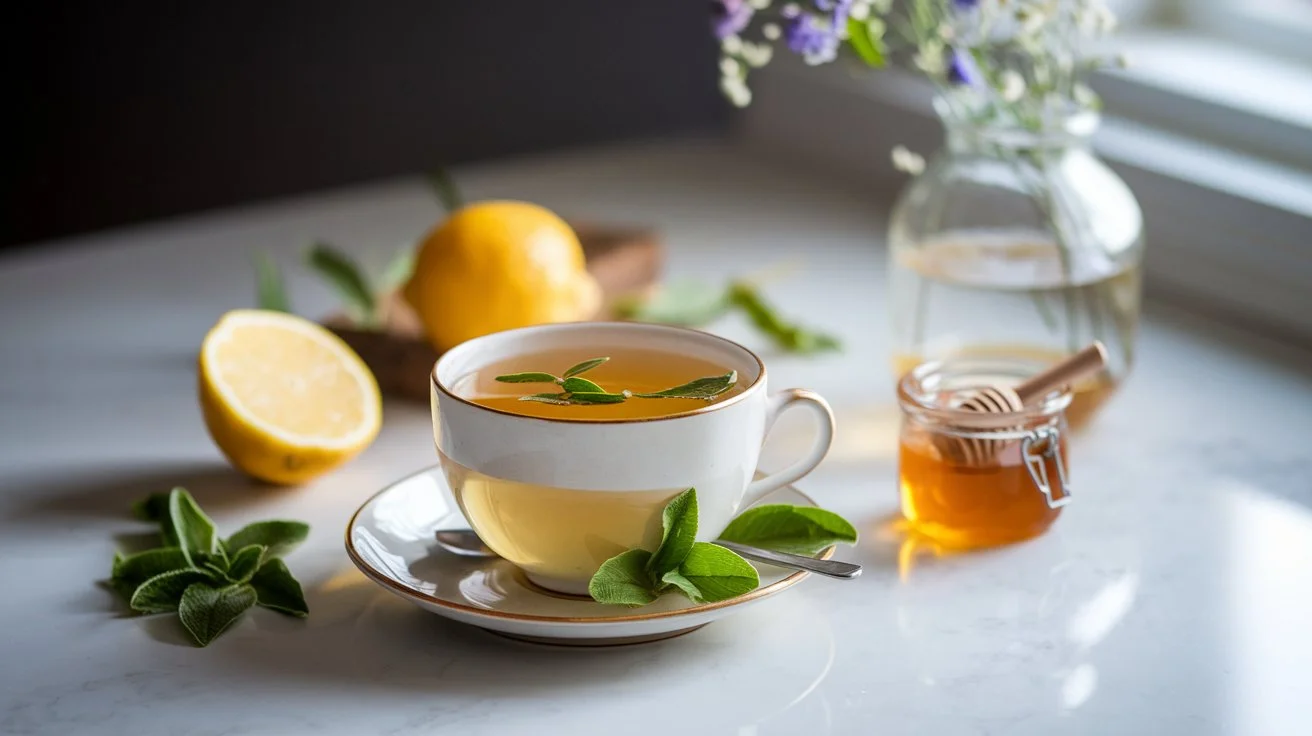How to Cook Beef Liver Stew Recipe: Step-by-Step Guide
Cooking beef liver stew might seem daunting, but it’s easier than you think! This hearty and flavorful dish is rich in nutrients and perfect for any occasion. Whether you’re a seasoned cook or a kitchen newbie, this guide will walk you through every step. From choosing the best ingredients to simmering the perfect stew, let’s dive into the world of delicious beef liver stew.
Preparation Essentials for Beef Liver Stew Recipe
Choosing the Right Beef Liver for Beef Liver Stew Recipe
- Freshness Indicators
Selecting fresh beef liver is critical to creating a delicious and nutritious stew. Fresh liver has a rich reddish-brown color, feels firm yet pliable, and has a mild, slightly earthy scent. Avoid liver that appears pale or has a greenish tinge, as this may indicate spoilage. A slimy texture or a metallic, sour smell are also clear signs that the liver is no longer fresh. - Grass-Fed vs. Grain-Fed Beef Liver
Grass-fed beef liver is often considered superior due to its higher levels of nutrients, such as omega-3 fatty acids and vitamins A and D. It also has a more robust, earthy flavor that many people prefer. On the other hand, grain-fed beef liver is milder and sometimes less expensive, making it a good option for those new to cooking with liver. Whichever you choose, ensure it’s sourced from reputable suppliers. - Where to Buy Quality Beef Liver
For the best results, purchase beef liver from a trusted local butcher, farmers’ market, or specialty store. These sources often provide fresher, higher-quality products than supermarkets. If you opt for frozen liver, check the packaging date and ensure it has been stored properly to maintain its texture and flavor.
Essential Ingredients for Cook Beef Liver Stew Recipe
- Core Ingredients and Their Importance
- Beef liver: The star ingredient of the recipe, providing a tender texture and rich flavor.
- Vegetables: Carrots, potatoes, celery, and onions add a hearty, wholesome base.
- Aromatics: Garlic and ginger enhance the dish’s complexity.
- Broth: Chicken or vegetable stock serves as the flavorful liquid base.
- Seasonings: Spices like paprika, cumin, and turmeric add depth and warmth.
- Alternatives and Adjustments
If you’re missing certain vegetables, don’t hesitate to substitute. Sweet potatoes can replace regular potatoes for added sweetness, while leeks can stand in for onions for a more delicate flavor. For a spicier stew, include chili powder or cayenne. - Storing Vegetables and Spices
To ensure the freshest flavors, store vegetables in a cool, dry place and refrigerate them if needed. Keep spices in airtight containers away from light and heat to preserve their potency and aroma. - Balancing Flavors
A great stew has a balanced flavor profile. Use a splash of lemon juice or a spoonful of tomato paste to introduce acidity. Add a pinch of sugar or caramelized onions for sweetness. Salt and spices bring it all together for a dish that’s bold and satisfying.
Tools and Equipment You’ll Need for Beef Liver Stew Recipe
- Basic Tools
- A sturdy cutting board for chopping vegetables and trimming the liver.
- A sharp knife for precise cuts.
- A large, heavy-bottomed pot for even cooking and preventing sticking.
- Optional Tools
- Immersion blender: Perfect for creating a smoother stew base if desired.
- Slotted spoon: Ideal for handling delicate liver pieces during cooking.
- Mixing bowls: Necessary for marinating and prepping ingredients.
Having these tools ready ensures that the cooking process flows smoothly, saving time and effort in the kitchen.
Prepping the Liver Before Cooking for Cook Beef Liver Stew Recipe
- Cleaning and Trimming the Liver
Start by rinsing the liver thoroughly under cold water to remove excess blood and impurities. Pat it dry with a paper towel. Use a sharp knife to trim off any membranes, veins, or connective tissue, which can become tough when cooked. - Removing Bitterness from Beef Liver
To reduce the liver’s natural bitterness, soak it in milk or lightly salted water for 20–30 minutes. This step not only improves the taste but also helps tenderize the liver, making it more palatable for those unfamiliar with its distinct flavor. - Cutting the Liver into Bite-Sized Pieces
Slice the liver into uniform, bite-sized pieces. Consistent cuts ensure even cooking, preventing some pieces from overcooking while others remain underdone. Smaller pieces also absorb marinades and flavors more effectively, making the final dish irresistibly delicious.
By thoroughly preparing your ingredients and tools, you’re setting yourself up for success in creating a flavorful and hearty beef liver stew recipe. Let’s move to the cooking process next!and stewing.
Preparation Essentials
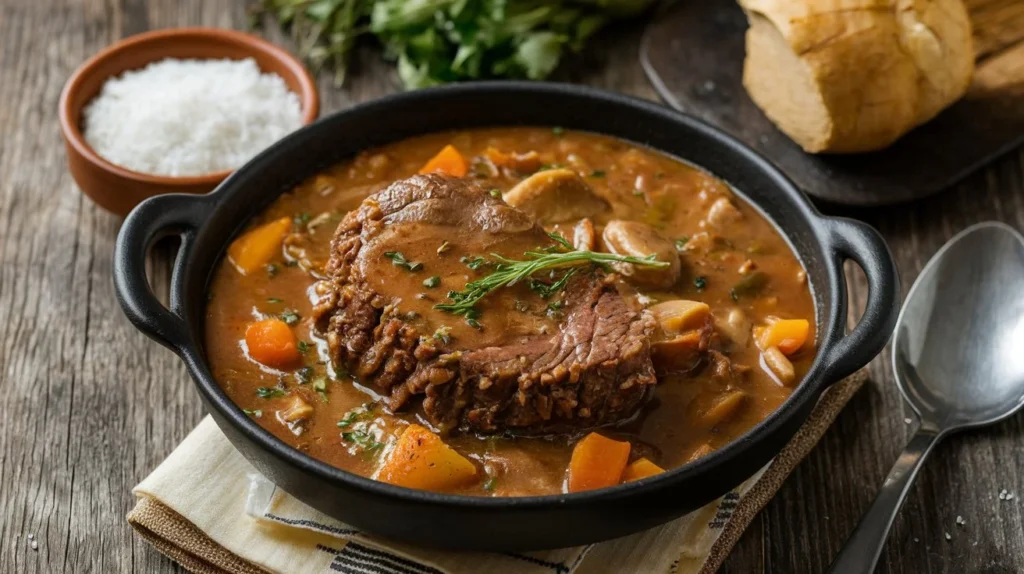
Choosing the Right Beef Liver
Selecting the best beef liver is crucial for making a delicious and nutritious stew. Let’s break down what to look for:
- Freshness Indicators
Fresh beef liver should have a deep reddish-brown color. It should feel firm yet pliable to the touch, with no slimy residue. Smell is another critical factor—fresh liver has a mild, earthy aroma, whereas an overly metallic or sour scent indicates spoilage. - Grass-Fed vs. Grain-Fed Beef Liver
Grass-fed beef liver is often preferred for its superior nutritional profile and robust flavor. It contains higher levels of vitamins and omega-3 fatty acids compared to grain-fed alternatives. However, grain-fed liver can also deliver excellent results if properly prepared. - Where to Buy Quality Beef Liver
For the best quality, purchase beef liver from trusted local butchers or farmers’ markets. If buying from a supermarket, opt for cuts labeled “fresh” or “pasture-raised.” Always check expiration dates and packaging integrity to ensure quality.
Essential Ingredients for Beef Liver Stew
The key to a great stew lies in the balance of its ingredients. Here’s what you’ll need and why they matter:
- Core Ingredients
- Beef liver (1 lb): The star of the dish.
- Vegetables: Carrots, potatoes, onions, and celery provide texture and flavor.
- Aromatics: Garlic and ginger enhance depth.
- Broth: Use chicken or vegetable stock for a rich base.
- Seasonings: Salt, pepper, cumin, and paprika bring the dish to life.
- Alternatives and Customizations
If you’re out of specific vegetables, feel free to substitute with what’s available. Sweet potatoes or parsnips can replace regular potatoes, while leeks can substitute onions for a milder flavor. - Storing Vegetables and Spices
Store vegetables in a cool, dry place to maintain freshness. Spices should be kept in airtight containers away from heat and light to preserve potency. - Balancing Flavors
A successful beef liver stew hits all the right notes: acidic (a splash of lemon or tomato paste), salty, and slightly sweet (from carrots or caramelized onions). This balance elevates the dish from good to great.
Tools and Equipment You’ll Need
The right tools make cooking more enjoyable and efficient. Gather these essentials:
- Basic Tools
- A large, heavy-bottomed pot: Ensures even heat distribution.
- A sharp knife: Essential for precise cutting.
- Cutting board: Use separate boards for meat and vegetables to avoid cross-contamination.
- Optional Tools
- Immersion blender: For creating a smoother stew base, if desired.
- Ladles and slotted spoons: For serving and handling ingredients during cooking.
By setting up your kitchen with these tools, you’ll streamline the cooking process and save time.
Prepping the Liver Before Cooking
Proper preparation is key to unlocking the best texture and flavor from beef liver.
- Cleaning and Trimming
Rinse the liver under cold water to remove blood and impurities. Pat it dry with a paper towel. Use a sharp knife to trim off membranes, veins, and any connective tissue. - Removing Bitterness
To counteract the liver’s natural bitterness, soak it in milk or a lightly salted water solution for 20–30 minutes. This step enhances the overall flavor, making the dish more enjoyable for those unfamiliar with liver’s distinct taste. - Cutting the Liver
Slice the liver into bite-sized pieces, ensuring uniformity for even cooking. Smaller pieces absorb marinades better and cook faster, retaining their tenderness in the stew.
Step-by-Step Cooking Process
How to Marinate the Beef Liver
Marinating beef liver enhances its flavor and tenderness. Let’s get it done the right way!
- Ingredients for a Flavorful Marinade
- Lemon juice or vinegar (for acidity).
- Garlic (minced for a robust aroma).
- Ginger (grated to add warmth).
- Salt and pepper (to taste).
- Paprika or cumin (for depth).
- Oil (a splash to coat the liver evenly).
- Techniques and Tips for Marinating Effectively
Combine all the marinade ingredients in a bowl. Toss in the prepped beef liver pieces, ensuring they’re fully coated. Cover the bowl and let it rest in the fridge for 20–30 minutes. This step not only tenderizes the liver but also infuses it with bold flavors.
Preparing the Base for the Stew
A flavorful base sets the tone for the stew.
- How to Sauté Vegetables and Aromatics
Heat 2–3 tablespoons of oil in a heavy-bottomed pot over medium heat. Add diced onions and cook until translucent. Next, throw in minced garlic, ginger, and a pinch of salt. Stir continuously to avoid burning while releasing the aromatics’ natural sweetness. - Using Oils and Spices to Build Flavor
Add your spices—paprika, cumin, and a dash of turmeric—directly into the sautéing vegetables. This technique blooms the spices, intensifying their flavors.
Cooking the Beef Liver
Once the base is prepared, it’s time to cook the marinated beef liver.
- Proper Methods to Brown the Liver
Remove the liver from the marinade and pat it dry to prevent splattering. Heat a little oil in a skillet over medium-high heat. Sear the liver pieces for about 1–2 minutes per side until they develop a golden-brown crust. - Avoiding Overcooking to Maintain Tenderness
Be careful not to overcook. Overcooked liver becomes rubbery and loses its delicate texture. Browning the liver lightly is sufficient since it will finish cooking in the stew.
Building the Stew
Now, it’s time to combine all the elements for a hearty stew.
- Adding Liquid
Pour in your preferred liquid—chicken or vegetable broth—for a rich and savory base. Start with 2–3 cups, depending on the stew’s desired consistency. - Adjusting the Consistency and Seasoning
Bring the mixture to a gentle boil, then reduce the heat to a simmer. Adjust the seasoning with salt, pepper, or a hint of paprika to taste. For a thicker stew, add a slurry of cornstarch and water. - Timing for Adding Vegetables and Other Ingredients
Add hardy vegetables like carrots and potatoes first, as they require longer cooking times. Include softer vegetables, such as zucchini or bell peppers, during the last 10–15 minutes to prevent them from becoming mushy.
Simmering to Perfection
Patience is key during this step!
- Ideal Simmering Time for a Rich Stew
Cover the pot and let the stew simmer on low heat for about 25–30 minutes. This allows the flavors to meld together beautifully while the vegetables and liver tenderize to perfection. - Tips for Stirring and Maintaining Even Cooking
Stir the stew occasionally to prevent sticking. Ensure the heat is low enough to maintain a gentle simmer, as a rapid boil can overcook the liver and ruin the texture.
Final Adjustments and Serving Suggestions
- Garnishing with Fresh Herbs
Before serving, sprinkle freshly chopped parsley or cilantro over the stew. This adds a pop of color and a burst of freshness. - Side Dishes That Pair Well
Beef liver stew pairs wonderfully with sides like fluffy rice, creamy mashed potatoes, or crusty bread. These options soak up the stew’s flavorful broth, making every bite delightful. - Presentation Ideas for a Hearty Stew
Serve the stew in deep bowls, ensuring every portion has a balance of liver, vegetables, and broth. Garnish with a lemon wedge for a vibrant touch, and accompany it with your chosen side dish for a complete meal.
Expert Tips, Variations, and Troubleshooting for Beef Liver Stew Recipe
Expert Tips for the Best Cook Beef Liver Stew Recipe
- Techniques to Enhance Flavors in Beef Liver Stew Recipe
- Use freshly ground spices for maximum aroma.
- Let the stew rest after cooking to deepen its flavor.
- Common Mistakes to Avoid When Cooking Beef Liver for Stew Recipe
- Avoid skipping the soaking step to remove bitterness.
- Don’t add liver to the stew too early; overcooking ruins its texture.
Variations of Beef Liver Stew Recipe
- Regional Adaptations of Cook Beef Liver Stew Recipe
- African: Add peanut butter for creaminess.
- Asian: Use soy sauce and ginger for a tangy twist.
- Adding Unique Ingredients to Beef Liver Stew Recipe
- Mushrooms add an earthy flavor.
- A splash of cream provides richness to the broth.
How to Store and Reheat Beef Liver Stew Recipe
- Proper Refrigeration and Freezing Methods for Beef Liver Stew Recipe
- Store leftovers in an airtight container for up to 3 days.
- Freeze portions for up to 3 months in labeled freezer bags.
- Best Practices for Reheating Beef Liver Stew Recipe Without Compromising Texture
- Reheat on low heat on the stove, stirring gently.
- Avoid microwaving to preserve the liver’s tenderness.
Troubleshooting Common Issues in Beef Liver Stew Recipe
- Dealing with Bitterness or Toughness in Beef Liver Stew Recipe
- Add a pinch of sugar or lemon juice to counteract bitterness.
- Ensure the liver is cooked briefly to maintain its softness.
- Fixing a Watery or Overly Thick Beef Liver Stew Recipe
- Simmer uncovered to reduce excess liquid.
- Add a slurry of cornstarch and water to thicken the stew.
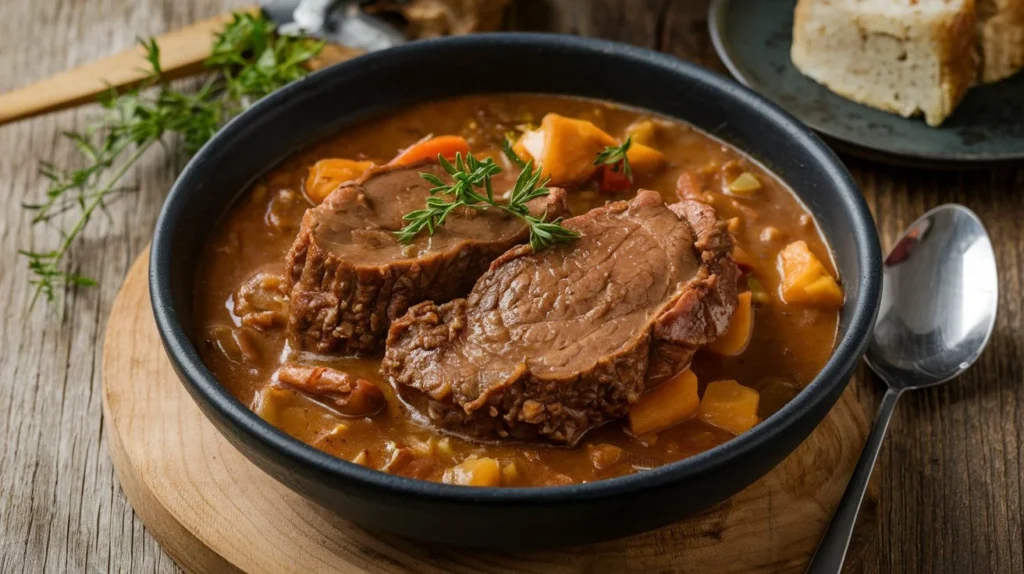
FAQs Based on “People Also Ask”
What is the best way to clean beef liver for stew?
Rinse the liver thoroughly under cold water, trim off membranes and veins, and soak it in milk or lightly salted water to remove impurities and bitterness.
How do you make beef liver tender in a stew?
Marinate the liver before cooking, cook it on medium heat for a short time, and ensure it finishes cooking in the stew to retain tenderness.
Can I substitute beef liver with another type of liver in this recipe?
Yes, you can use chicken or lamb liver as substitutes. However, adjust the cooking time since these are more delicate.
What spices go well with beef liver stew?
Paprika, cumin, turmeric, black pepper, and thyme are excellent choices. They enhance the flavor without overpowering the dish.
Is beef liver stew healthy for everyone?
While beef liver stew is rich in iron, vitamins, and minerals, those with specific health conditions (like high cholesterol) should consume it in moderation.
How long does it take to cook beef liver stew?
The stew typically takes 30–40 minutes to cook, including preparation time.
Conclusion
Summarizing the Recipe
Cook Beef Liver Stew Recipe is a rewarding experience. It’s simple to make, packed with nutrients, and endlessly versatile. With the right preparation and techniques, you’ll create a delicious, hearty dish that’s perfect for family meals or special occasions.
Call-to-Action
Give this recipe a try, and don’t forget to share your experiences in the comments! Got a variation or unique twist? Let us know. Explore more comforting recipes to add to your culinary repertoire and make every meal a delight!

